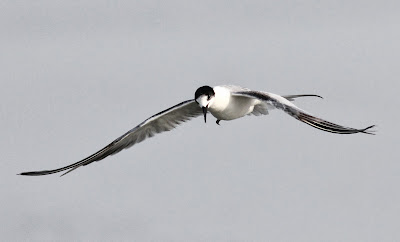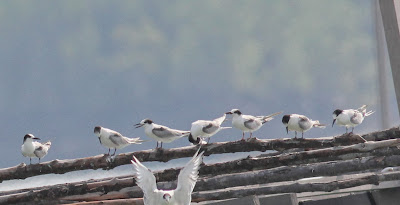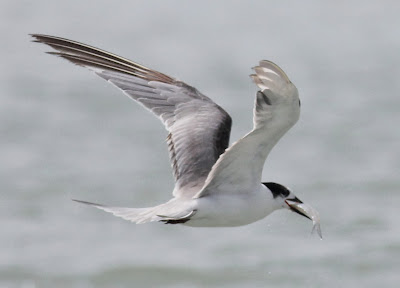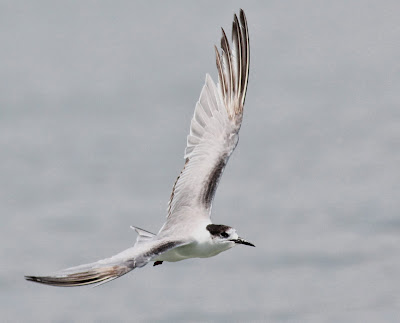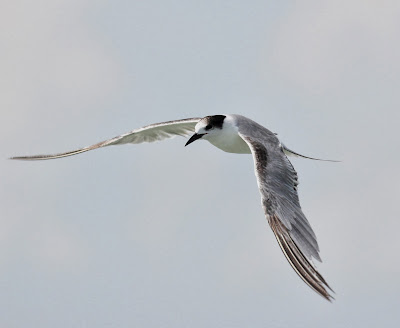From my recent pelagic trip off the coast of Kuala Selangor, Peninsular Malaysia on 16 November 2013, i have the opportunity to observed and photographed the Lesser Crested Tern (Sterna bengalensis) which were reported to be frequently seen here but lesser in numbers as compared to the Greater Crested Terns (Sterna bergii).
It was reported that there were three main subspecies for this tern: i) S.b bengalensis (medium-dark grey above), ii) S.b torresii (dark grey above) and iii) S.b emigrata: (pale grey above). S.b bengalensis were reported to breed in abundance in the red sea and have been ringed in large flocks under the Mediterranean Seabirds Action Plan in Libya and Bahrain. Here are some of the photos of the Lesser Crested Tern seen at this coastline:
Adult winter birds were reported to spot all grey on its upper wings as depicted from the above two photos while the top most photo could possibly shown a juvenile or a 1st winter bird.
They (the Lesser Crested Terns) have occupied almost all the poles located in the sea.
While looking at their images back home, i have noticed a metal ring on its right tarsus. Location coordinates: 3°14'42.6"N
101°16'38.1"E
It was unfortunate that we were not able to read the info/inscriptions on the ring as our equipment was beyond the reach of a clear image at that point of time. Nevertheless the above bird could have been possibly ringed in Bahrain as explained by Professor Dr. Brendan Kavanagh:
"Hi Ronnie
Thanks for the photo and information re the Lesser-crested Tern with a ring. There is a very strong possibility that this bird was ringed in the Persian Gulf in the Bahrain waters. We have ringed chicks on an island at Al Jarrim for about 6 years and have had recoveries (of bridged and lesser-crested terns from the west coast of India, the east Coast of Sri Lanka and as far south as the Maldives. So I am not surprised that they might have made their way as far as Peninsular Malaysia. We ring our birds with a British Trust for Ornithology ring on the right leg so if you even got a few numbers of a piece of an address we might be able to confirm the ring source.
Thanks once again for this exciting report.
Regards
Brendan Kavanagh"
Its wing span is reported to be between 94-105cm and its flight is also quite similar to a Common Tern (S.longipennis). Its bill as you can see was also slightly drooped.
This one here has a peculiar way of tugging its feet - instead of facing the back it has decided to place its feet in front.
Lesser Crested Terns were also reported to do "plunge diving" for fish.
They would certainly look better in their breeding colors.
HAPPY TERN WATCHING !












































